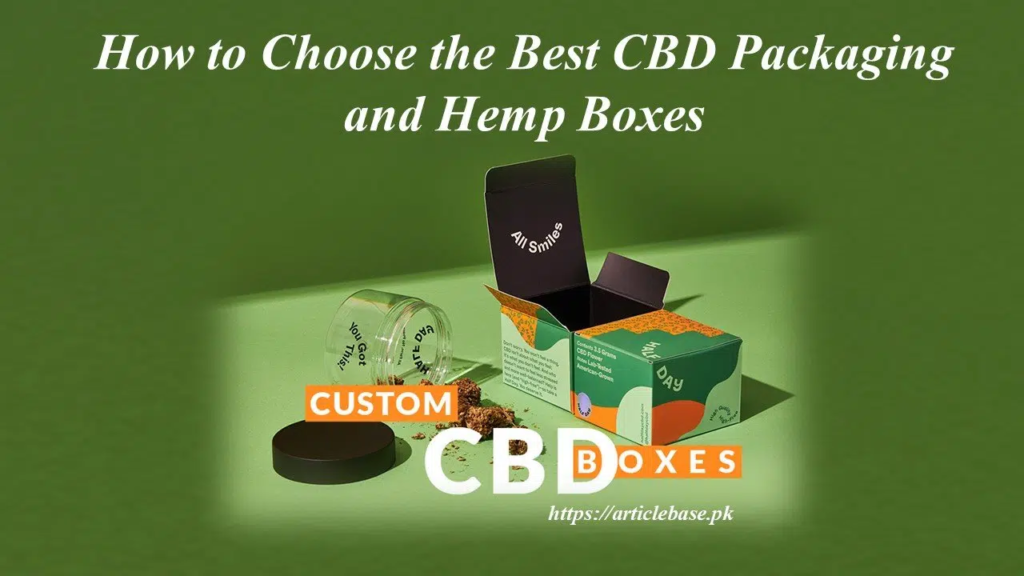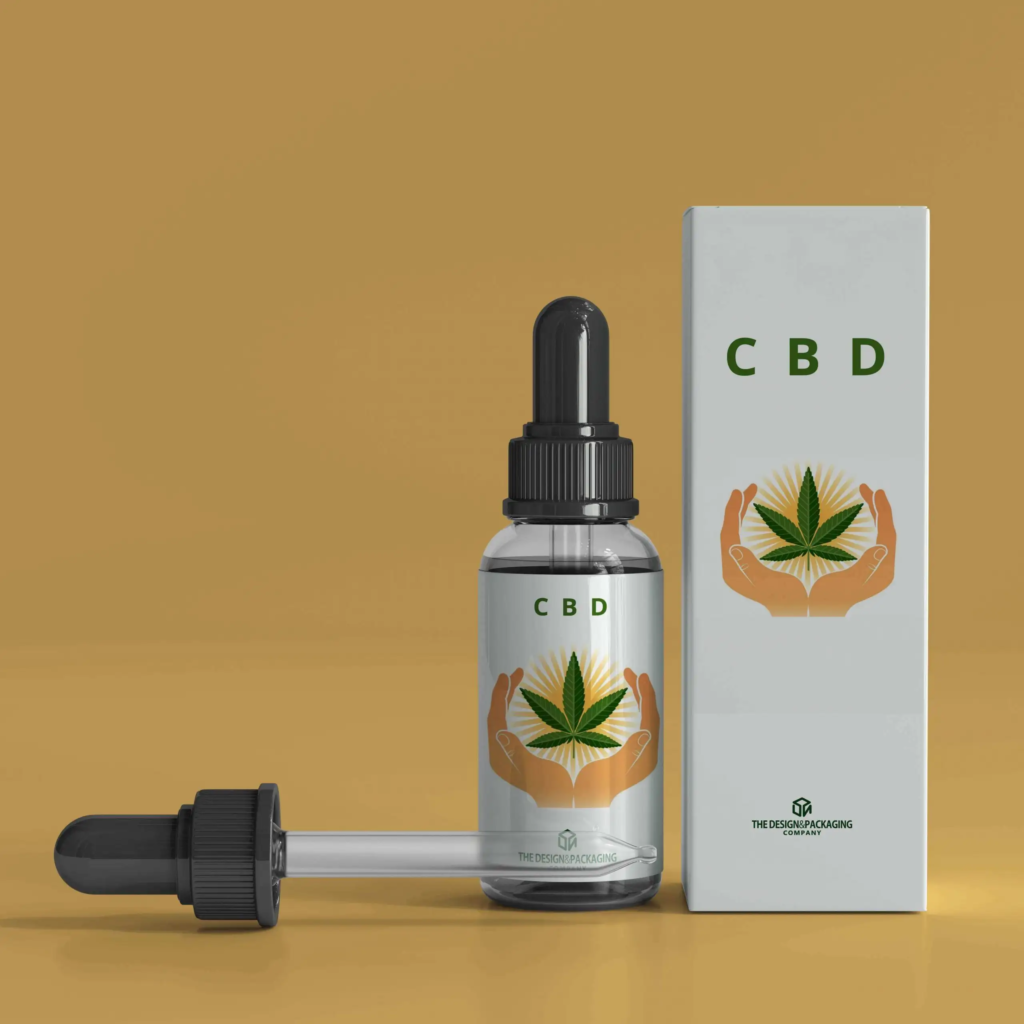
In recent years, the CBD industry has experienced exponential growth, with various products flooding the market. As the competition intensifies, the importance of effective packaging design cannot be overstated. CBD packaging plays a crucial role in attracting consumers, conveying essential information, and ensuring compliance with regulations. In this article, we will delve into the specific designing needs for CBD packaging, highlighting key elements and considerations.
Understanding the CBD Packaging Landscape
The CBD market encompasses a wide range of products, including oils, tinctures, capsules, edibles, and topicals. Each product category comes with its unique packaging requirements. When considering CBD packaging design, it is essential to understand the diverse needs and preferences of the target audience. Whether it’s a sleek and modern design for young consumers or a more clinical appearance for medical users, the packaging should resonate with the intended market.

Compliance and Regulations
CBD is subject to strict regulations, and its packaging must comply with various legal requirements. Designers need to be well-versed in these regulations to ensure that the packaging meets all the necessary standards. This includes proper labeling, dosage information, and adherence to regional or international guidelines. Packaging designs should facilitate easy inclusion of mandatory information without compromising aesthetics.
Reflecting Brand Identity
The CBD market is highly competitive, and establishing a strong brand identity is crucial for success. Packaging serves as a powerful tool to communicate a brand’s values, ethos, and personality. Designers should consider incorporating unique elements that distinguish the product on the shelf. From color schemes to logo placement, every aspect of the design should align with the brand’s identity and resonate with the target audience.
Enhancing Shelf Visibility
In a crowded marketplace, standing out on the shelf is a significant challenge. CBD packaging needs to be visually appealing and grab the attention of potential customers. Bold colors, creative graphics, and distinctive shapes can contribute to increased shelf visibility. Additionally, the packaging design should effectively communicate the product’s key features and benefits to entice consumers.

Ensuring Product Safety and Integrity
CBD products require packaging that not only looks good but also ensures the safety and integrity of the contents. Designers must consider factors such as light sensitivity, air exposure, and temperature fluctuations that can affect the quality of CBD products. Packaging materials should be chosen carefully to preserve the product’s potency and freshness while protecting it from external elements.
User-Friendly Design
The ease of use is a critical aspect of CBD packaging design. Consumers should be able to access the product easily and understand how to use it without confusion. Intuitive packaging, with clear instructions and user-friendly features, can enhance the overall customer experience. Whether it’s a child-resistant closure or a convenient dropper, the design should prioritize ease of use.
Sustainability and Eco-Friendly Practices
As consumer awareness about environmental issues grows, the demand for sustainable and eco-friendly packaging is on the rise. CBD brands need to prioritize environmentally conscious design choices. Incorporating recyclable materials, reducing packaging waste, and adopting eco-friendly printing methods are essential steps in meeting the evolving expectations of environmentally conscious consumers.
Graphic Elements and Typography
The visual appeal of CBD packaging relies heavily on graphic elements and typography. Designers must carefully choose fonts, colors, and imagery that align with the product’s branding and appeal to the target audience. High-quality graphics and clear typography contribute to a professional and trustworthy image, crucial for building consumer confidence in the product.

Incorporating QR Codes and Interactive Elements
In the digital age, incorporating technology into packaging design can enhance the consumer experience. QR codes linking to product information, dosage guidelines, or third-party lab results provide valuable information to consumers. Interactive elements, such as augmented reality features, can create a memorable and engaging experience, setting the product apart from competitors.
What materials are commonly used for CBD Packaging Boxes?
CBD packaging requires materials that not only provide a protective barrier for the product but also adhere to regulatory standards and contribute to the overall branding and sustainability goals of the company. Here are some commonly used materials for CBD boxes:
Cardboard and Paperboard:
- Overview: Cardboard and paperboard are widely used for CBD boxes due to their versatility, cost-effectiveness, and eco-friendly nature.
- Benefits: These materials are easily customizable, allowing for various printing options to showcase branding and product information. They are also recyclable, aligning with the growing demand for sustainable packaging.
Glass:
- Overview: Glass packaging is often chosen for CBD tinctures and oils due to its impermeability, which helps maintain the product’s freshness and potency.
- Benefits: Glass is a premium and aesthetically pleasing material that conveys a sense of quality. It is also recyclable and inert, preventing any chemical interactions with the CBD content.

Plastic:
- Overview: Plastic packaging is commonly used for CBD products such as capsules, gummies, and creams.
- Benefits: Plastic offers durability and flexibility in design. It can be molded into various shapes and sizes, providing practical options for different product forms. However, there is a growing emphasis on using eco-friendly and recyclable plastics to address environmental concerns.
Metal:
- Overview: Metal packaging, particularly aluminum, is used for CBD products that require protection from light and air.
- Benefits: Metal provides excellent barrier properties, preventing external elements from affecting the product. Aluminum, in particular, is lightweight, durable, and recyclable, making it a popular choice for certain CBD packaging needs.
Biodegradable and Compostable Materials:
- Overview: As sustainability becomes a key focus, biodegradable and compostable materials made from plant fibers, cornstarch, or sugarcane are gaining popularity.
- Benefits: These materials decompose naturally, reducing environmental impact. Brands adopting such materials align with consumer preferences for eco-friendly packaging.
Child-Resistant Packaging:
- Overview: Child-resistant packaging is a regulatory requirement for certain CBD products, especially edibles and ingestible forms.
- Materials: Various materials, including plastic and composite materials, are engineered to meet child-resistant standards. These materials ensure that the packaging is secure for adults but challenging for children to open.
Hemp-Based Packaging:
- Overview: Given the association of CBD with hemp, some brands opt for packaging made from hemp fibers.
- Benefits: Hemp-based packaging is not only biodegradable but also promotes the use of the entire hemp plant. It aligns with the sustainability goals of the CBD industry and appeals to environmentally conscious consumers.
Foam Inserts and Padding:
- Overview: To protect fragile CBD products such as glass bottles or delicate items, foam inserts or padding made from materials like expanded polystyrene (EPS) or recycled cardboard may be used.
- Benefits: These materials provide cushioning, preventing breakage during transportation and ensuring that the product reaches the consumer in optimal condition.

Final Verdict
Designing effective CBD packaging requires a thoughtful and comprehensive approach. From understanding the diverse needs of the target audience to complying with strict regulations, every aspect of the design process plays a crucial role. A successful CBD Boxes design reflects the brand’s identity, enhances shelf visibility, ensures product safety, and embraces sustainable practices. With the right combination of creativity and functionality, designers can contribute significantly to the success of CBD products in a competitive market.
When selecting packaging materials for CBD products, manufacturers and designers must consider a balance between functionality, aesthetics, regulatory compliance, and environmental impact. The choice of materials plays a crucial role in shaping the overall packaging design and contributing to the success of CBD products in the market.
